Lava tubes are underground passages formed when molten lava flows beneath a hardened surface, leaving a hollow tunnel once the lava drains away. In the United States, these formations are found in regions shaped by ancient eruptions and cooled basaltic flows. They offer a chance to step inside Earth’s fiery history and witness geology in motion. From Hawaii’s glowing origins to Oregon’s hidden depths, these ten lava tubes reveal the country’s most remarkable subterranean wonders.
1. Ape Cave (Washington)
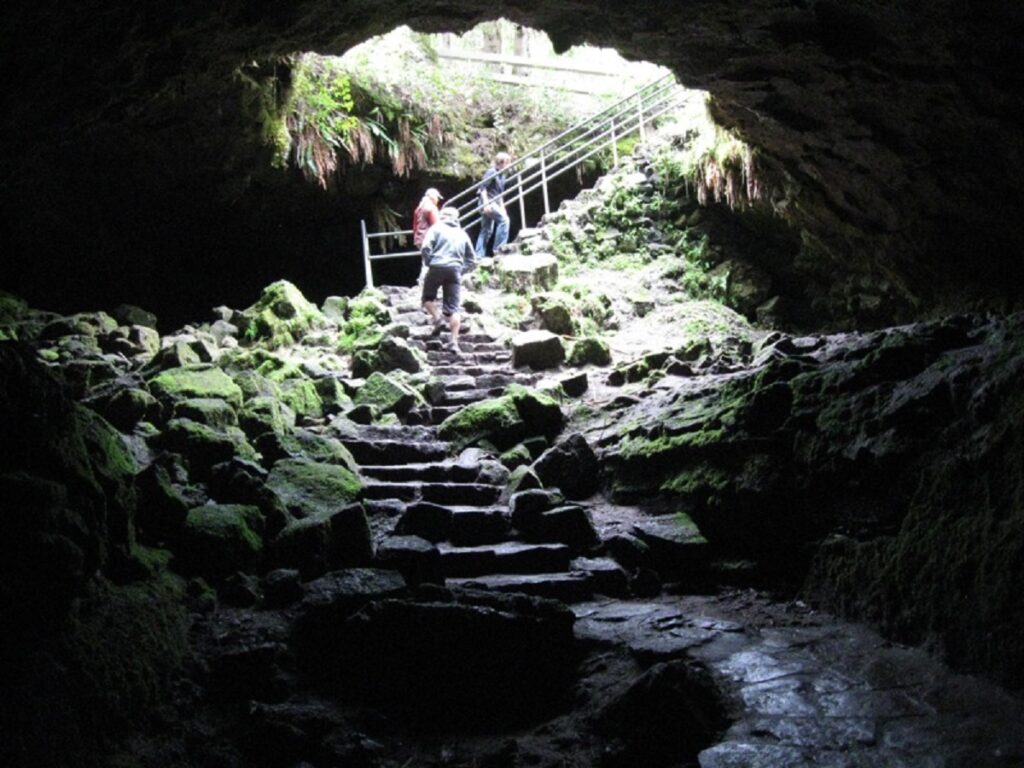
Formed nearly 1,900 years ago on the southern slope of Mount St. Helens, Ape Cave is the longest continuous lava tube in the continental U.S., stretching about 12,800 feet. Its steady temperature of 42°F makes it feel like a walk through an ancient freezer of basalt rock. Two main passages, the upper and lower tubes, offer different experiences, from easy walks to challenging climbs. The walls still bear smooth lava flow textures that trace the molten movement of a prehistoric eruption frozen in time.
2. Lava River Cave (Arizona)
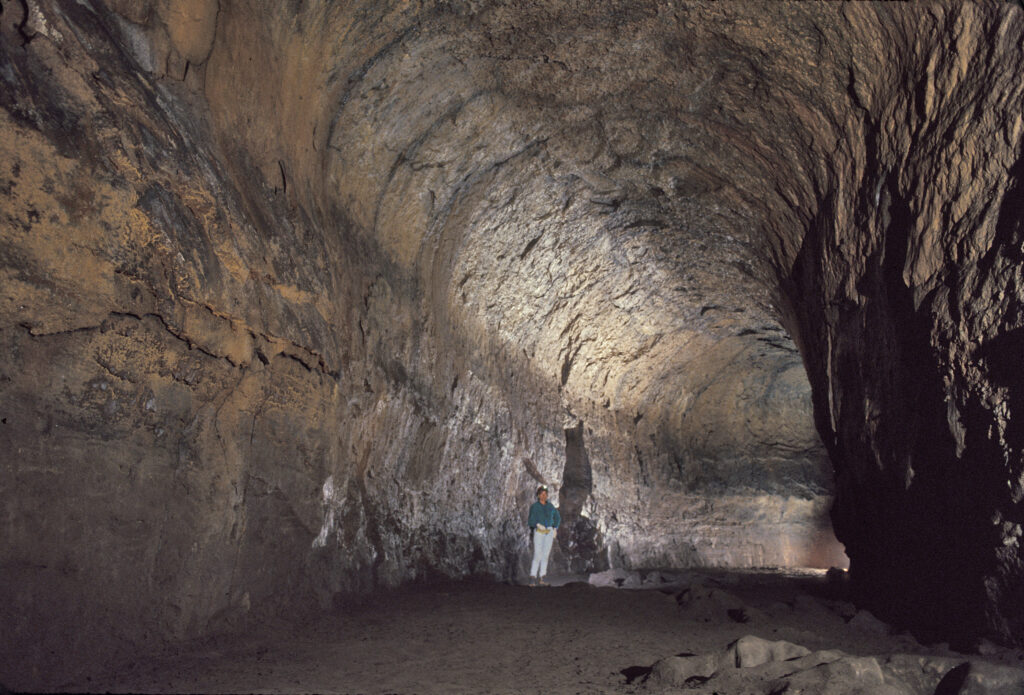
Near Flagstaff, the Lava River Cave formed around 650,000 years ago from a massive basaltic eruption. Measuring about 3,820 feet long, the tube’s ceiling shifts from towering 30-foot arches to narrow crawl spaces. Inside, the air stays around 40°F year-round, creating a brisk and eerie silence. The floor’s uneven lava ripples tell a story of molten currents that once rushed beneath the crust. Visitors today walk the same tunnel carved by a lava river that flowed when mammoths still roamed the land.
3. Boyd Cave (Oregon)
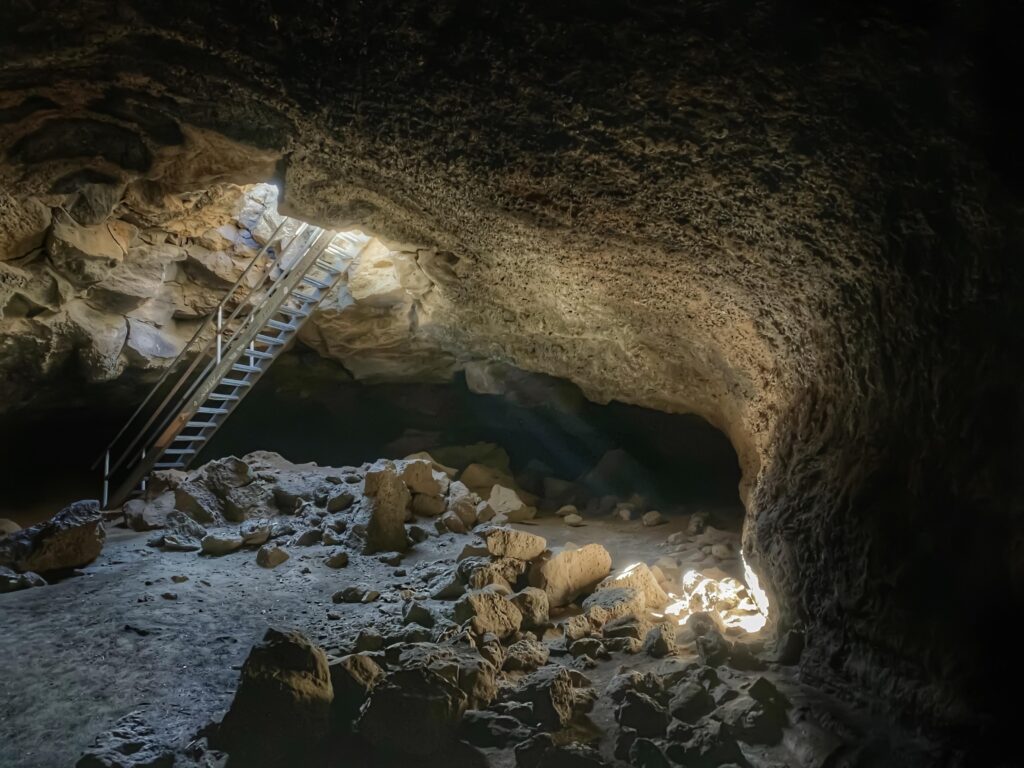
Hidden beneath Central Oregon’s volcanic plateau, Boyd Cave was created roughly 75,000 to 400,000 years ago. The tube extends for about 1,880 feet, accessible through a steel stairway leading down from a skylight opening. Inside, the polished basalt walls and ropey lava textures sparkle under flashlight beams. Most of the passage allows easy walking, with just a short crawl section. Cool and quiet, it’s a fascinating glimpse into Oregon’s volcanic heart, an underground path shaped by flowing fire long ago.
4. Kaumana Cave (Hawaii)

Formed during Mauna Loa’s 1881 eruption, Kaumana Cave lies just outside Hilo on Hawaii’s Big Island. The cave stretches over two miles, with entrances framed by lush tropical ferns. Inside, the air turns damp and cool as basalt formations twist and curve along the tunnel. The smooth, glassy lava walls reveal the flow’s once-molten speed, now frozen in elegant patterns. Though parts of the cave run beneath private land, the public sections offer a striking reminder of how quickly nature sculpts beauty from destruction.
5. Pluto’s Cave (California)

Discovered in 1863 near Mount Shasta, Pluto’s Cave is among California’s oldest known lava tubes, estimated at nearly 190,000 years old. Its large, partially collapsed chambers showcase the effects of time on ancient volcanic rock. Daylight filters through fallen ceilings, lighting up massive lava pillars and boulder-strewn paths. The cave’s dry climate helped preserve its rugged formations, making it a perfect site for adventurous explorers. Its atmosphere feels wild and untouched, a true reminder of the Earth’s fiery beginnings.
6. Mammoth Cave (Utah)
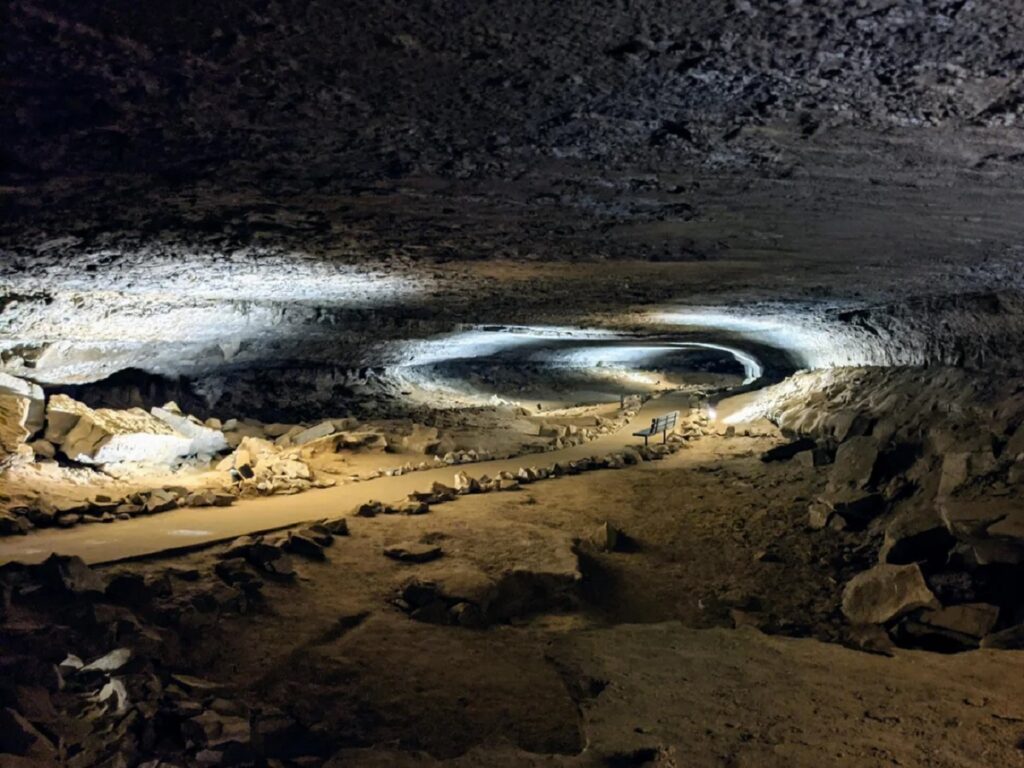
Utah’s Mammoth Cave, on the Markagunt Plateau, is a striking lava tube formed less than 2,000 years ago. At over 2,200 feet long and perched at 8,000 feet elevation, the cave stays icy cold even in summer. Multiple chambers twist through dark basalt corridors, home to hibernating bats in winter. The contrast between the alpine forests above and the volcanic world below creates a surreal experience. It’s a window into Utah’s volcanic past, shaped by the young lava flows of an evolving landscape.
7. Derrick Cave (Oregon)
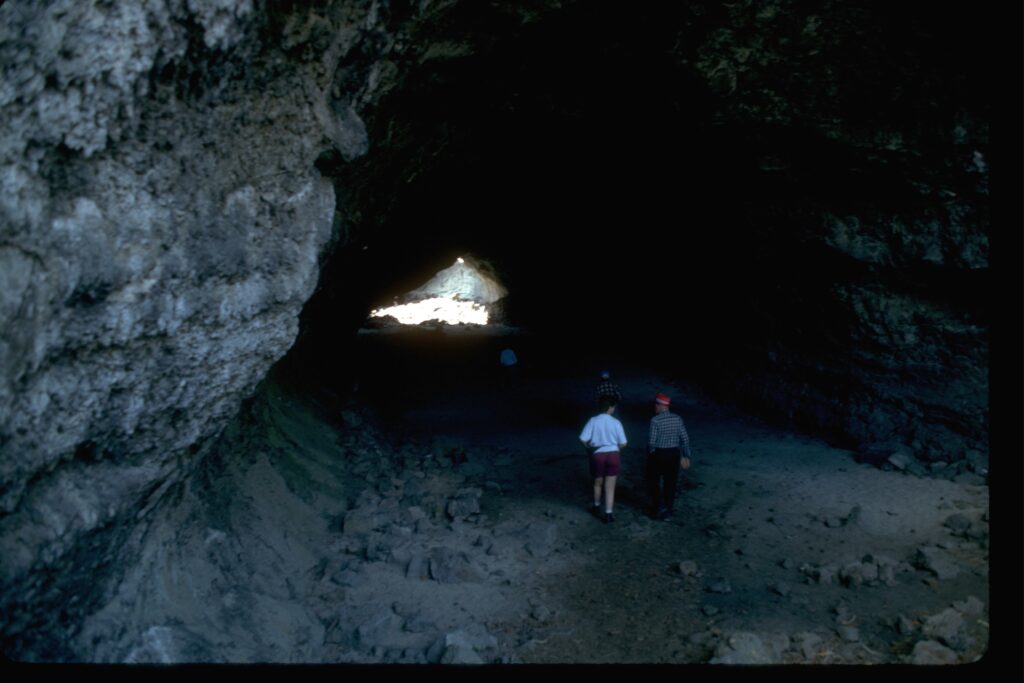
Tucked in Oregon’s high desert, Derrick Cave stretches about 1,134 feet long with wide, arched ceilings reaching nearly 46 feet high. Formed between 6,800 and 13,000 years ago, it was once used by early settlers for storage and even as a Cold War fallout shelter. The entrance, a dramatic skylight opening, leads to branching lava corridors scattered with cooled rock drips. Despite its remote location, Derrick Cave rewards explorers with solitude, silence, and a raw connection to Oregon’s volcanic soul.
8. Cheese Cave (Washington)

Discovered in 1894, Cheese Cave earned its name when local farmers used its cool 42°F air to age cheese. Located in the Gifford Pinchot Forest, this 2,060-foot lava tube formed thousands of years ago from basalt flows linked to Mount Adams. The floor is mostly flat, making it one of the easier caves to explore. High ceilings and smooth walls reflect the steady cooling of lava once flowing through. Today, it remains both a geological wonder and a quirky chapter in Washington’s rural history.
9. Lava Beds Tube System (California)

The Lava Beds National Monument in northern California contains more than 500 known lava tubes, the highest concentration in North America. Formed by eruptions from the Medicine Lake Volcano, the system offers caves ranging from short, walkable passages to miles-long tunnels of cooled basalt. Some contain ice formations, others remain dry and echoing. Established as a national monument in 1925, this volcanic labyrinth invites visitors to explore the layers of time that built the region’s fiery underground network.
10. Hawaiʻi Volcanoes National Park Tubes (Hawaii)

Within Hawaiʻi Volcanoes National Park, countless lava tubes wind beneath the surface, shaped by eruptions of Kīlauea and Mauna Loa. The most famous, Thurston Lava Tube, was discovered in 1913 and remains easily accessible to visitors. It offers a walk through a naturally sculpted tunnel glowing with golden light. The smooth basalt walls and dripping lava stalactites show how molten rivers once coursed below. Walking through it feels like stepping into the heartbeat of an active volcano alive, ancient, and endlessly evolving.
Comments